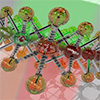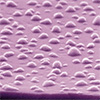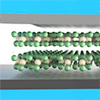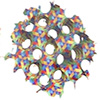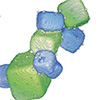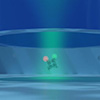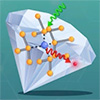White blood cell
White blood cells (WBCs), also called leukocytes or leucocytes, are the cells of the immune system that are involved in protecting the body against both infectious disease and foreign invaders. All white blood cells are produced and derived from multipotent cells in the bone marrow known as hematopoietic stem cells. Leukocytes are found throughout the body, including the blood and lymphatic system.
All white blood cells have nuclei, which distinguishes them from the other blood cells, the anucleated red blood cells (RBCs) and platelets. The different white blood cells are usually classified by cell lineage (myeloid cells or lymphoid cells).
Myeloid cells (myelocytes) include neutrophils, eosinophils, mast cells, basophils, and monocytes. Monocytes and further subdivided into dendritic cells and macrophages. Monocytes and neutrophils are phagocytic.
Lymphoid cells (lymphocytes) include T cells (subdivided into helper T cells, memory T cells, cytotoxic T cells), B cells (subdivided into plasma cells and memory B cells), and natural killer cells.
Historically, white blood cells were classified by their physical characteristics (granulocytes and agranulocytes), however this classification system is less frequently used.
The number of leukocytes in the blood is often an indicator of disease, and thus the white blood cell count is an important subset of the complete blood count. The normal white cell count is usually between 4 × 109/L and 1.1 × 1010/L. In the US, this is usually expressed as 4,000 to 11,000 white blood cells per microliter of blood. White blood cells make up approximately 1% of the total blood volume in a healthy adult, making them substantially less numerous than the red blood cells at 40% to 45%. However, this 1% of the blood makes a large difference to health, because immunity depends on it. An increase in the number of leukocytes over the upper limits is called leukocytosis. It is normal when it is part of healthy immune responses, which happen frequently. It is occasionally abnormal, when it is neoplastic or autoimmune in origin. A decrease below the lower limit is called leukopenia. This indicates a weakened immune system.
Check out these latest Nanowerk News:

